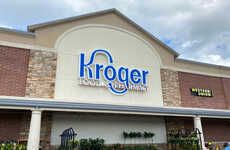
Cincinati's Findlay Market Incubates Locally Produced Goods
Justin Lam — November 22, 2018 — Lifestyle
References: findlaymarket.org
First established in 1855, Cincinnati's Findlay Market is serving as a catalyst for transforming the city into the modern age while still preserving a rich sense of history. Driven by a host of core values, Findlay Market serves as a representation of the city's vision of the future, while also providing a rich variety of locally grown food and locally created products. All of this is perfectly presented in an impressive building that harkens back to Cincinnati's history while ushering in a modern age.
Part of the goal of Findlay Market lies in its incubation of local and entrepreneurial businesses. Almost all of the shops in the market are owned by local residents and are growing and profiting in the space. This makes Findlay Market an incredibly desirable location for mom and pop shops as they can work closely and for Cincinnati residents.
Part of the goal of Findlay Market lies in its incubation of local and entrepreneurial businesses. Almost all of the shops in the market are owned by local residents and are growing and profiting in the space. This makes Findlay Market an incredibly desirable location for mom and pop shops as they can work closely and for Cincinnati residents.
Trend Themes
1. Local Entrepreneurship - City markets providing incubation spaces for entrepreneurs are creating opportunities for local residents.
2. Locally Sourced Goods - Increasing demand for locally sourced goods creates opportunities for small businesses to capture a market niche.
3. Preserving History - Integrating history and modernization can attract consumers while also fostering a sense of community identity and pride.
Industry Implications
1. Food and Beverage - Local farmers and craft producers can benefit from incubation spaces and curated opportunities for their products in markets.
2. Small Business - City markets can be an ideal location for small businesses to thrive and connect with local communities.
3. Tourism and Hospitality - Marketplaces with rich history and modern amenities can attract tourists and introduce them to local goods and culture.
1.5
Score
Popularity
Activity
Freshness























